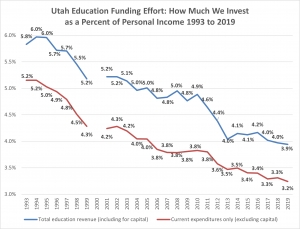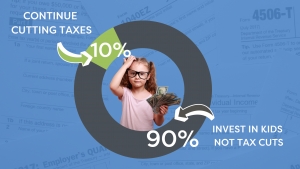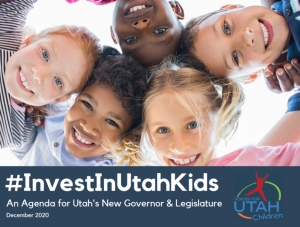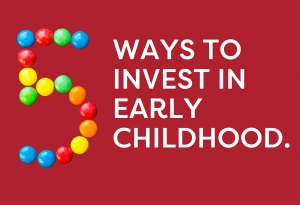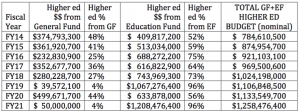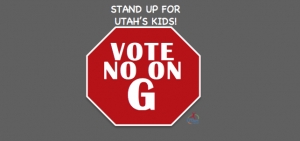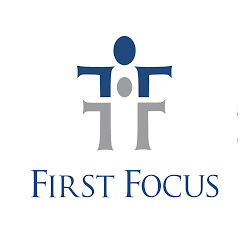State Policy
NEW REPORT: Who's Helping Kids in Utah Courts?

We are proud to release a new report on Utah's system for ensuring that all children appearing in juvenile delinquency court are represented by a defense attorney. And we are happy to report that there is some good news to celebrate in this area of our advocacy work!
In the past two years, the frequency of Utah children appearing in juvenile court without a defense attorney has decreased from about 33% statewide to less than 5%. This new report reveals that Utah children now almost never waive their right to an attorney.
"Who's Helping Kids in Court?" is a follow-up to our 2019 report, "And Justice For All...Kids: A Child's Right to the 'Guiding Hand of Counsel and the State of Defense Representation for Children in Utah's Juvenile Courts," which also explored the issue of whether children in Utah delinquency courts are being given the legal support to which they are entitled.
Read and/or download the full report here.
The right of young people to be represented by an attorney in delinquency court proceedings was established in the landmark case In Gault, 387 US 1 (1967). In that case, the Supreme Court articulated that multiple due process rights must be afforded to children who are facing charges in a juvenile court.
Despite the clearly established rights of young people, both under Gault and in subsequent important legal decisions, many states - including Utah - have struggled for decades to put these promised protections in practice. As this update report shows, though, major policy changes made between 2018 and 2020 appear to have had a very positive impact on the practical fulfillment of Utah children’s right to an attorney.
The key findings presented in this report, for which our team of court observers viewed more than 250 distinct juvenile court hearings across the state, are as follows:
- Overwhelmingly, young people appearing in juvenile delinquency hearings did not waive their right to be represented by an attorney.
- Juvenile delinquency hearings rarely proceeded without defense counsel present, regardless of where the hearing was held in the state.
- While Utah’s juvenile court judges rarely needed to explain the right to counsel to youth appearing in their (virtual) courtrooms, they regularly reviewed other key rights.
- Defense attorney attendance at hearings does not necessarily translate into quality legal counsel for the young people they represent.
Children who have a defense attorney almost always have better legal outcomes in delinquency court than those who don’t. Because court involvement can have lifelong impacts for youth, we have worked with many partners over the past two years to pass positive legislation and enact better practices. "Who's Helping Kids in Court?" shows that these changes, particularly the passage of SB32 during the 2019 legislative session, have worked to vastly improve Utah's ability to ensure children receive the legal representation to which they are legally entitled.
SB32, "Indigent Defense Act Amendments," created a “statutory presumption of indigency” for all youth appearing in juvenile court, eliminating for youth and their families the burdensome process of proving that they were poor enough to receive a state-appointed public defender. This means youth are less likely to appear without legal counsel in the early stages of the delinquency process. Early automatic appointment also seems to reduce opportunities for parental/familial influence over a young person’s decision to waive their right to an attorney. SB32 also ensured that youth would be less likely to appear in review hearings, where their progress on court orders is discussed, without their attorney present. SB32 made clear that only in rare circumstances would a judge release a public defender from representing a client before conclusion of the case.
Read and/or download the full report here.
In addition to our primary findings, our report also discusses the following additional conclusions:
- Online hearings offer several clear advantages that should be balanced against the legal and practical benefits of traditional, in-person hearings. Improvements must be made, though, to incorporate online hearings as a future option.
- Management of professionalism, protocol and participation seemed to be a challenge in some online courtrooms.
- Hearings were often delayed or interrupted due to technical issues.
- Using a single Webex link for a full day of hearings created confusion, and potentially compromised youth and family privacy in sensitive situations.
- Online-only hearings may interfere with some judges’ ability to connect with the youth appearing before them.
- Juvenile court judges’ expertise at interacting with young people - including building rapport, interpreting youth expression and inspiring cooperation - varies widely. Some judges’ inability to communicate effectively with young people may seriously limit their capacity to positively influence children appearing in their courtroom.
- There appear to be persistent difficulties for youth and families who require court interpreters. These challenges likely create serious equity issues for youth appearing in juvenile delinquency court.
In response to our findings, we make several recommendations in this report for policymakers, for the juvenile courts, and also for youth and their families. Those recommendations, if fulfilled, would build upon the progress Utah is already making in the administration of justice for Utah children who become court-involved. As Utah continues to successfully reduce both the size and the negative impacts of its juvenile justice system, we are pleased to report on this additional area of progress, as well as offer constructive feedback for future improvements.
On May 18, 2021, as it always does around this time of year, the US Census Bureau released its Annual Survey of School System Finances. This report is the authoritative source of state education finance data and rankings, including the one we are all familiar with that has ranked Utah last in the nation for per-pupil K-12 education investment every year since 1988. This year's report, which as always covered the data from two years ago (the 2018-19 school year), included both good news and bad news for Utah.
On the positive side, Utah has finally defeated Idaho in the annual fight for 49th place. Voices for Utah Children has been tracking this annual battle for a number of years. We've come close in the past, and in FY2019 we finally won, by a grand total of $29 per pupil or $19 million overall, as illustrated in the chart below:
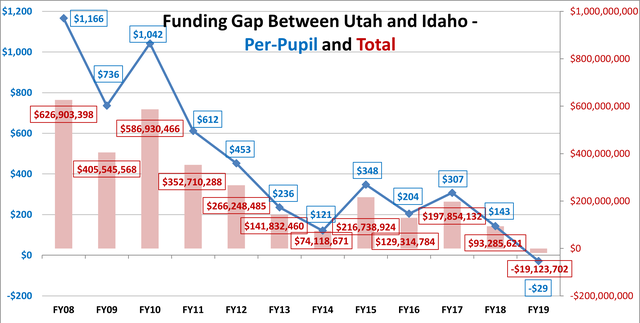
On the negative side, Utah's "education funding effort," a measure of the share of state personal income that we invest in K-12 education, continued its long decline. in the 1990s, Utah invested a total of 6% of our personal income in our education system the 1990s, but that share has fallen by more than a third, to under 4% today, as shown in the chart below:
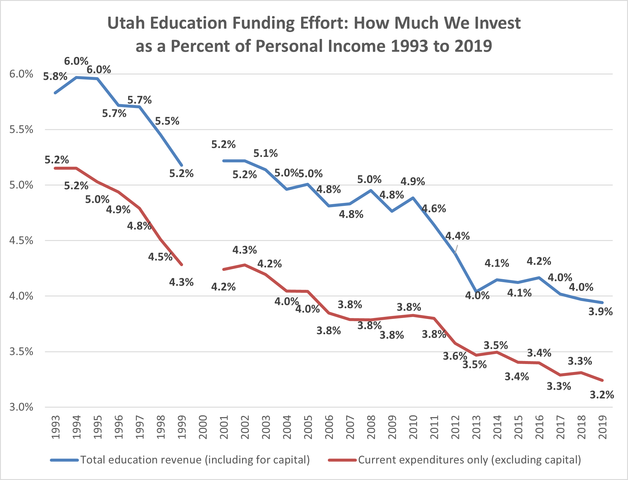
The blue line is total education revenue, including revenues used for capital spending (such as new school buildings), while the red line shows only current expenditures, which excludes capital spending. (Utah tends to spend a higher share of overall education revenue on capital compared to other states because our rapidly growing population requires more frequent construction of new school buildings.)
As our education funding effort has declined, so has our national ranking for education funding effort. In the 1990s we consistently ranked in the top 10 nationally for education funding effort, but now we're in the bottom 10-15, as shown below:
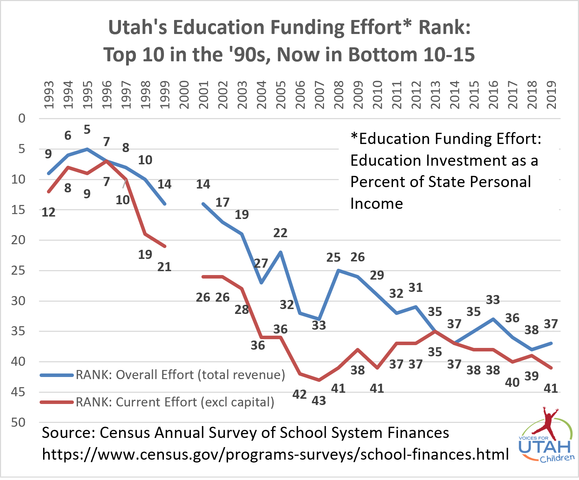
Voices for Utah Children's most recent economic benchmarking report, comparing Utah to Arizona and to the nation as a whole, discusses the question of whether Utah's economic development strategy needs to transition away from our practice of passing regular tax breaks (on average $100 million annually for the last 25 years, adding up now to about $2.5 billion each year, intended to spur job growth) and instead focus on rolling back some tax breaks and restoring some revenues so we can address the unmet needs in our education system -- our high class sizes and rates of teacher attrition that are contributing to our low high school graduation and college completion rates, including large gaps between different demographic groups.
MEDIA COVERAGE OF THE NEW CENSUS DATA:
- KUER radio: https://www.kuer.org/education/2021-05-27/utahs-not-last-in-the-country-for-per-pupil-spending-anymore-but-funding-still-isnt-making-the-grade
- KUTV-2: https://kutv.com/news/beyond-the-books/utah-no-longer-last-place-in-per-pupil-education-spending
- Salt Lake Tribune: https://www.sltrib.com/news/education/2021/05/18/utah-is-not-last-nation/
Beginning this Summer 2021, Utah Local Education Agencies (LEAs) will be receiving approximately $615 million in Elementary and Secondary School Emergency Relief Funds (ESSER) funds from the American Rescue Plan. Now is the time to use this funding to help our youngest learners that will need the additional instruction and interventions now more than ever.
In this explainer, Voice's staff Anna Thomas and Laneta Fitisemanu will cover the ESSER funding Utah is set to receive as well as ways that we can use the funds and support full day kindergarten and preschool expansion.
We have exactly two school years (2021-22, 2022-23) and three summers (2021, 2022, 2023) to spend these funds. It is critical that we think big picture about where we invest this money when it comes to education.
We have strong data and evidence supporting that full day kindergarten and preschool programs help improve learning gaps for children that participate particularly for our most vulnerable and underrepresented student groups. This is why using ESSER funds to help expand these much wanted and needed programs is critical and one of the most important investments we can make that will have a huge impact for years to come.
Let's invest in Utah kids by using this relief funding to expand early education programs and further support the value and importance of giving more of Utah children and families access to full day kindergarten and preschool programs!
Resources and References
Local education authorities, the state Office of Education, and the Office of Child Care have received hundreds of millions of dollars that can and should be spent to invest in what is best for Utah’s children.
We must work together to put these investment dollars to use with creative, community-supported solutions that help all Utah families with young children.
Let’s rise to the occasion and build quality early care and education plans and programs that work best for Utah kids!
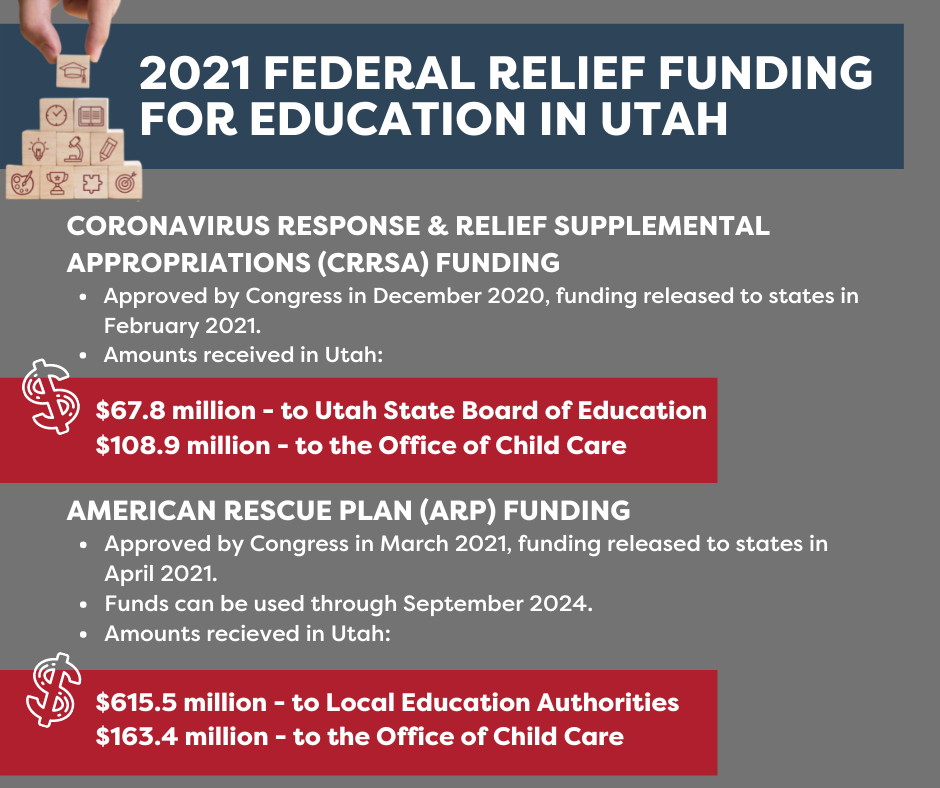
NOW IS THE TIME TO MAKE BOLD PLANS IN YOUR COMMUNITY!
Here are some ways that American Rescue Plan funding can be used in your community to support early childhood care and education:
- Free summer enrichment programs for families in need of academic support as well as child care!
- Expanded full-day kindergarten opportunities to ensure all kids in your community can get caught up and start first grade on par with their peers!
- On-line and in-person home visiting support for families with young children who want and need extra guidance regarding child development, safety and nutrition, and family financial stability.
Click to download and share our American Rescue Plan for Early Education Flyer
Voices Calls on Gov. Cox to Veto Tax Cuts Now That Their Price Has Doubled Due to "American Rescue Plan"
Voices for Utah Children Calls on Governor Cox to Veto Three Tax Cut Bills Due To New Federal Law
Salt Lake City -- Voices for Utah Children, the state's leading child research and advocacy organization, issued a call today (Friday, March 12, 2021) for Governor Spencer Cox to veto three recently passed tax cut bills, HB 86, SB 11, and SB 153. The organization cited this week's enactment of new federal legislation, H.R. 1319, The American Rescue Plan Act, signed yesterday by President Biden, which cuts federal COVID relief aid to states by $1 for each $1 of tax cuts enacted on or after March 3, 2021. The three tax cut bills in question have yet to be signed by Governor Cox.
Voices for Utah Children's Fiscal Policy Director Matthew Weinstein said, "The three bills in question are tax cuts that almost completely exclude the lowest income 30-40% of Utah taxpayers and mostly benefit the highest-income 30-40% of filers. They permanently reduce by $100 million annually our ability to invest in our urgent unmet needs such as education, public health, poverty prevention, closing majority-minority gaps, infrastructure, clean air, and so on. Now we learned this week that their price has just doubled. Because the new federal COVID relief law penalizes states for tax cuts on a dollar-for-dollar basis, they will actually cost Utah $200 million of revenue next year, not just $100 million."
Voices for Utah Children CEO Moe Hickey said, "This year we've launched our new #InvestInUtahKids campaign to raise awareness of the urgency of making investments today that will bear fruit for our children tomorrow. We applaud the Legislature for adding funds this year for pre-K and Optional Enhanced Kindergarten. At the same time, tremendous unmet needs remain and we cannot lose Federal Funds at this time. We urge Gov. Cox to consider whether it may be best to save these tax cuts for future consideration now that their price tag has doubled."
The federal legislation reads as follows:
A State or territory shall not use the funds provided under this section or transferred pursuant to section 603(c)(4) to either directly or indirectly offset a reduction in the net tax revenue of such State or territory resulting from a change in law, regulation, or administrative interpretation during the covered period that reduces any tax (by providing for a reduction in a rate, a rebate, a deduction, a credit, or otherwise) or delays the imposition of any tax or tax increase.
COVERED PERIOD.—The term ‘covered period’ means, with respect to a State, territory, or Tribal government, the period that— (A) begins on March 3, 2021; and (B) ends on the last day of the fiscal year of such State, territory, or Tribal government in which all funds received by the State, territory, or Tribal government from a payment made under this section or a transfer made under section 603(c)(4) have been expended or returned to, or recovered by, the Secretary.
The High Price of Lower Taxes
Legislative leaders have said that 2021 should be “the year of the tax cut.” Numerous public opinion surveys show that Utahns disagree. This may come as a surprise to policymakers, who have been in the habit of handing out tax break after tax break for decades.
But there seems to be an increasing public awareness that Utah is now paying a price for decades of tax cutting that have left us with the lowest overall tax level in 50 years relative to Utah personal income.
UTAH'S URGENT UNMET NEEDS
We all like being able to pay less in taxes. But there is a growing understanding that tax cuts are leaving us unable to address the long list of urgent unmet needs in education, infrastructure, social services, air quality, public health, and many other areas that affect our standard of living and quality of life. All of these issues will shape the Utah that our children will one day inherit.
Outlined below are some examples of the urgent unmet needs in Utah.
Early Care and Education
Amount |
Unmet Need |
| $500-600 Million/Year |
Envision Utah estimates that we need to invest an additional $500-600 million each year just to reduce teacher turnover, where we rank among the worst in the nation. Our leaders’ unwillingness to solve our education underinvestment problem is why our high school graduation rate is below the national average (after adjusting for demographics) and our younger generation of adults (age 25-34) have fallen behind their counterparts nationally for educational attainment at the college level (BA/BS+). |
| $52.5 Million/Year | Voices for Utah Children estimates that it will cost $52.5 million to make full-day Kindergarten available to all Utah families who would choose to opt in to it. |
| $1 Billion | Well over $1 billion is one estimate for a much needed comprehensive system of early childhood care and education (pre-k) in Utah. |
Health
Amount |
Unmet Need |
| $59 Million/Year |
It would cost Utah about $59 million each year to cover all of our 82,000 uninsured children. The longstanding preference for tax cuts over covering all kids is why we rank last in the nation for covering the one-in-six Utah kids who are Latinx and why the state as a whole ranks in the bottom 10 nationally for uninsured children. |
Human Services
Area |
Unmet Need |
| Mental Health & Substance Abuse Treatment |
Utah ranks last in the nation for mental health treatment access, according to a 2019 report from the Gardner Policy Institute. A 2020 report from the Legislative Auditor General found that Utah’s Justice Reinvestment Initiative had failed to achieve its goal to reduce recidivism -- and actually saw recidivism rise -- in part because “both the availability and the quality of the drug addiction and mental health treatment are still inadequate.” (pg 51) |
| Disability Services |
The DSPD disability services waiting list has doubled in the last decade from 1,953 people with disabilities in 2010 to 3,911 in 2020. The FY20 $1 million one-time appropriation made it possible to provide services to 143 people from the waiting list. |
| Domestic Violence | The Utah Domestic Violence Coalition 2017 Needs Assessment identified insufficient funding for shelters, affordable housing, child care, legal representation, and mental health and substance abuse treatment services as major obstacles to protecting women from domestic violence. |
| Seniors |
The official poverty measure undercounts senior poverty by about a third because it does not consider the impact of out-of-pocket medical expenses. A 2018 study found that seniors spent $5,503 per person on out-of-pocket medical expenses in 2013, making up 41% of their Social Security income. (For most seniors, Social Security is the majority of their income, and it makes up 90% or more of income for 21% of married couples and about 45% of unmarried seniors.) |
Infrastructure, Environment, and Housing
Area |
Unmet Need |
| Infrastructure |
The American Society of Civil Engineers gives Utah a C+ grade for infrastructure in its December 2020 report. The Utah Transportation Coalition has identified a funding shortfall of nearly $8 billion over the next two decades. |
| Air Quality | The Wasatch Front ranks as the 11th worst air quality in the nation for ozone and 7th worst for short-term particle pollution |
| Housing |
Affordable housing units fall 41,266 units short of meeting the need for the 64,797 households earning less than $24,600. Among extremely low-income renter households, 71% pay more than 50% of their income for housing, which is considered a severe housing burden. The FY21 affordable housing appropriation request for $35 million from Sen. Anderegg, which was already just a small step in the right direction, was reduced to just $5 million. |
WHY TAX CUTS ARE A BIG DEAL
Some legislators have said to us, "What's the big deal with $100 million of tax cuts out of a $22 billion budget?".
The big deal is that we’ve been cutting, on average, about $100 million every single year for the last 25 years.
Voices for Utah Children’s research has found that tax cuts from the last 25 years has left us short $2.4 billion each year, amounting to an 18% cut to public revenues.
One could even call us a “slow-motion Kansas” because in 2012 they cut taxes overnight by 15%, leading to an economic slump and political backlash that saw the Republican legislature reverse the cuts in 2017 and the public elect a Democratic governor in 2018.
But here in Utah, we’re like the proverbial frog in the pot of water heating on the stove. The devastating impacts of these revenue reductions have been slow and incremental, so we’ve come to accept as normal a state of affairs that Kansans quickly reversed.
Instead of figuring out the fairest way to restore some of those lost revenues so we can address our most urgent challenges, Utah’s political leadership continues to pass new tax cuts every year, generally skewed toward the top of the income scale.
For example, Voices for Utah Children analyzed two of the tax cuts proposed this year and found that they excluded lower-income Utahns completely and mostly went to the highest-income households – even though their supporters said publicly that they are intended to help low- and middle-income Utahns.
Public opinion surveys conducted last year by the Deseret News and Hinckley Institute, by the Utah Foundation, and by Envision Utah all found a strong popular preference for public investment over tax cuts.
Same thing with surveys this month by the Deseret News-Hinckley Institute and by Voices for Utah Children.
Breaking old habits can be hard. As is often the case, the public appears to be ahead of our political leaders. But let's hope that they too will eventually come to appreciate the wisdom of their constituents, who are increasingly aware of the high price Utah is paying for lower taxes.
Utah has been fortunate in weathering the current recession. This gives us a unique opportunity to be able to make smart long-term investments at a time when other states are cutting budgets. As a State we need to take advantage of this situation and invest in Utah kids, not tax cuts.
THIS OP-ED APPEARED IN THE SALT LAKE TRIBUNE ON MARCH 1, 2021
#InvestInUtahKids: An Agenda for Utah's New Governor and Legislature
Salt Lake City - Voices for Utah Children released publicly today (January 6, 2021) "#InvestInUtahKids: An Agenda for Utah's New Governor and Legislature," the first major publication of our new #InvestInUtahKids initiative.
Utah begins a new era in this first week of January, with the swearing in of a new Governor and Lt. Governor and a new Legislature. The arrival of 2021 marks the first time in over a decade that the state has seen this kind of leadership transition. Last month Voices for Utah Children began sharing with the Governor-elect and his transition teams the new publication, and on Wednesday morning Voices will share it with the public as well.
The new publication raises concerns about the growing gaps among Utah's different racial, ethnic, and economic groups and lays out the most urgent and effective policies to close those gaps and help all Utah children achieve their full potential in the years to come in five policy areas:
- Early education
- K-12 education
- Healthcare
- Juvenile justice
- Immigrant family justice
The report, which was initially created in December and distributed to the incoming Governor and his transition teams, closes with a discussion of how to pay for the proposed #InvestInUtahKids policy agenda. The pdf of the report can be downloaded here.
Top Five Ways to Invest in Early Childhood
“The way we [invest in Utah] is by focusing on our kids, giving them the best opportunities, the best resources at the earliest possible time...to help them to live better, happier and less trauma-filled lives, while also saving taxpayer money by dealing with these issues early on, before they lead to bigger problems down the road.”
Those words above, spoken by our new Governor, when he was serving as the Chair of Utah’s Early Childhood Commission in his capacity as Lieutenant Governor, capture our sentiments at Voices for Utah Children exactly!
We agree with these words, and call on all our state leaders to put them into bold action. With the coronavirus pandemic revealing the serious cracks in our state’s education system and child care sector, we need strategic investment big more than ever.
Currently, Utah lags behind most other states with regard to investment in early care and learning support for Utah families with young children How do we lag behind, you ask? Learn more here!
Taking these five steps would constitute great progress in Utah’s championship of early education – and also promise the greatest return on investment of any educational reform.
1. Appoint a Cabinet-level Early Childhood Investment advisor.
Early education is very different from primary, secondary and higher education. Investment in early childhood care and learning requires a dedicated focus. This advisor should act as the full-time staff director of the Early Childhood Commission, which is now chaired by Lieutenant Governor Deidre Henderson. Why would having a full-time commission director make a difference? Here's why.
2. Reimburse full-day kindergarten at a full Weighted Pupil Unit.
Utah has one of the nation’s lowest rates of participation in full-day kindergarten. This is due to lack of access, not family preference. In areas where full-day kindergarten is offered, Utah families overwhelmingly participate. Okay, what's a "weighted pupil unit" and why is it important? And by the way, what is Utah's current level of participation in full-day kindergarten?
Currently, local education authorities (LEAs) have to cover the cost of full-day kindergarten themselves – making access inequitable and unreliable. You can change this by budgeting a full WPU for full-day kindergarten programming, wherever families want it and LEAs can offer it. We've come to the conclusion that Utah is ready for more full-day kindergarten, based partly on these key reasons.
3. Build a statewide High-Quality School Readiness (HQSR) mixed-delivery system.
Utah’s only state-level investment in high-quality preschool hasn’t grown since it began more than seven years ago. Arguments over assessments and oversight have stymied expansion. It’s time to put the turf battles aside and get serious about extending performance-based preschool grants to more schools, child care providers, and community programs. Um, what is a "mixed-delivery system" for preschool? And what is the state's current investment in preschool?
4. Use federal COVID relief money - and after that, state funding - to stabilize, strengthen and build Utah's childcare system for the future.
Working families need their kids to be safe, cared for and progressing developmentally while breadwinners are at work. In the past year, Utah has received a flood of emergency funding from the federal government to make sure Utah families continue to have access to safe, quality childcare throughout the pandemic - and beyond the recovery. Utah should waive parent co-pays for families receiving childcare subsidies, pay childcare providers based on the enrollment (not attendance) of children using subsidies, and continue its successful Operations Grant program. When the federal relief funding runs out, Utah should replace it with state dollars. How do childcare subsidies work, and why are these changes important?
5. Support regional coordination to improve kindergarten transitions.
Utah’s sprawling, mixed-delivery early childhood ecosystem can’t be managed by state administrators in Salt Lake City. Parents, community leaders, child care providers and educators need support to organize locally, and coordinate services at the city, county and school district levels. Utah should increase, significantly, its financial support of regional Child Care Resource & Referral (CCR&R) agencies, to staff up efforts at regional coordination. What, precisely, do you mean by a "sprawling ecosystem?"
We loved how Governor Cox and Lieutenant Governor Henderson talked about educational opportunity, early education and education equity on the campaign trail.
“It is absolutely critical that education funding is our first and foremost priority,” said then-candidate Cox on the campaign trail. “We have to make sure that kids in rural Utah, as well as the west side of the Salt Lake Valley, get the same opportunities, the same education as kids in Park City.”
We could not agree more heartily. Park City has full-day kindergarten, public and private preschool, community investment in child care access, and an Early Childhood Alliance that supports regional coordination of programs for young children. Governor Cox is right: every Utah community deserves the same - and they will need bold state leadership to support them in getting there.
If Utah is serious about every Utah family having equitable access to these same opportunities, these five steps will be central to our work in the next four years.
Answers to Your Totally Common Sense Questions
About Early Childhood Care & Education in Utah
How do we lag behind other states?
As a state, Utah contributes very little funding toward important early childhood interventions, including: home visiting programs, preschool (including Head Start and Early Head Start), child care subsidies, and full-day kindergarten. Where these programs exist, they are made possible almost entirely by federal funding.
Many other states extend the impact of federal funding for home visiting, Head Start, child care subsidies and other early childhood interventions by adding their own state dollars to grow those programs. Utah does not. As a result, fewer families can benefit from these programs in Utah communities, than would be possible with additional state funding. (Okay, take me back to where I was!)
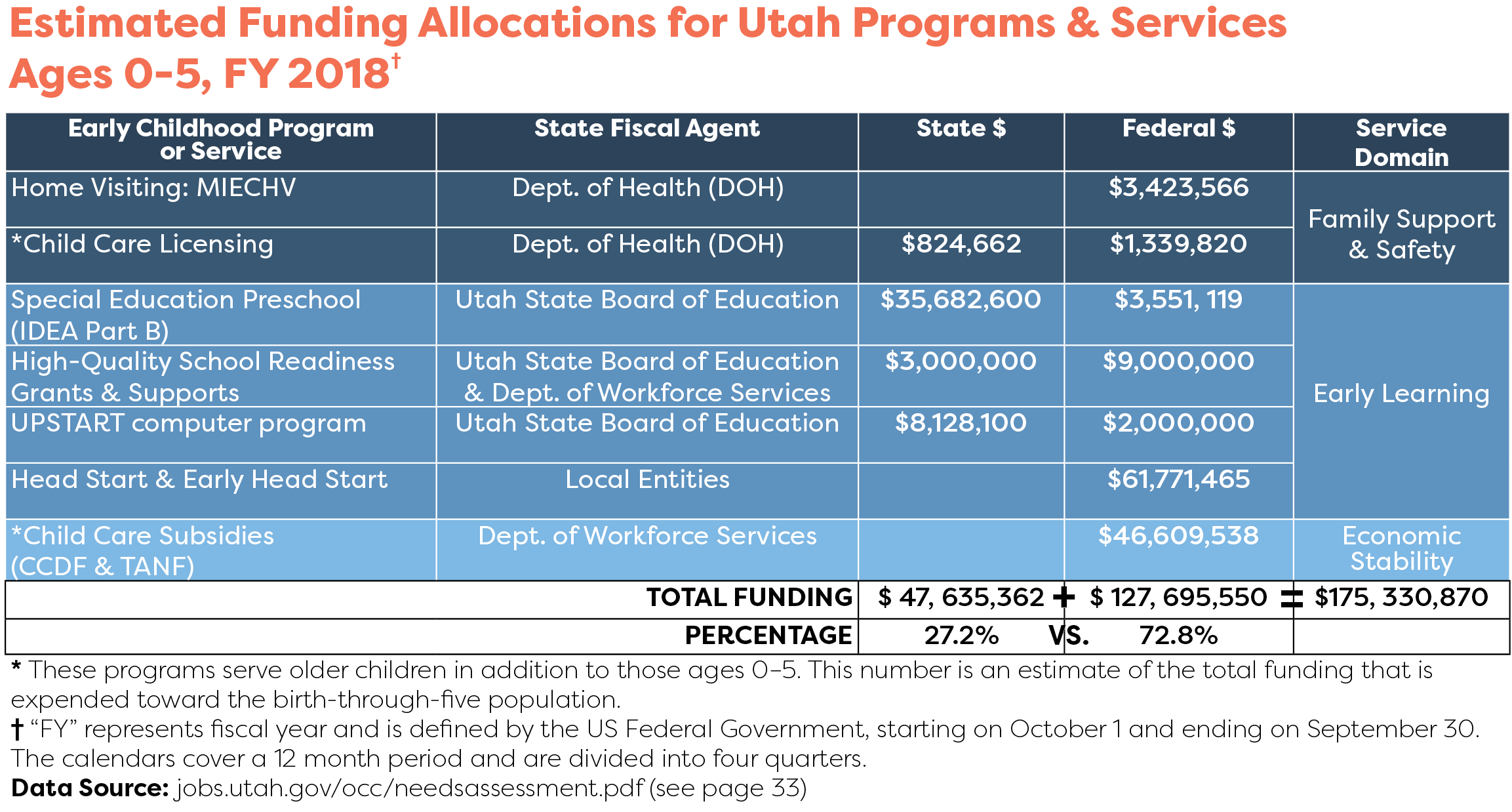
Why would having a full-time commission director make a difference?
When Utah’s Early Childhood Commission was proposed via legislation by Rep. Lowry Snow and Sen. Ann Millner during the 2019 General Session, the original concept contained funding for a full-time staff member to support the functioning and forward momentum of the new Commission. When the bill finally passed, this funding was removed. Since then, staffing for the Commission has bounced between the Lieutenant Governor’s Office and the Office of Child Care (in the Department of Workforce Services), with those responsibilities always falling to a hardworking public servant already tasked with multiple other critical education and child care projects.
One persistent issue with the coordination and alignment of Utah’s early care and education system is that there is no single entity, agency or individual committed to that effort.
Leadership, intention and single-minded commitment is needed to shepherd Utah’s early care and education system to the next level of improvement; currently, all stakeholders at the Early Childhood Commission table must juggle their early childhood work with multiple other state government responsibilities. (Thanks. Now take me back to where I was!)
What is a "weighted pupil unit" and why is it important?
A “weighted pupil unit” or WPU is the designated funding allocation provided by the state legislature to support the education of a single Utah public school student. Each year, the state legislature and the executive branch (including the Governor’s Office and the Utah State Board of Education) come to an agreement as to how many state dollars will be provided to each school, through its local education authority (or LEA, which can be a school district or a charter school) for each student enrolled for the next school year.
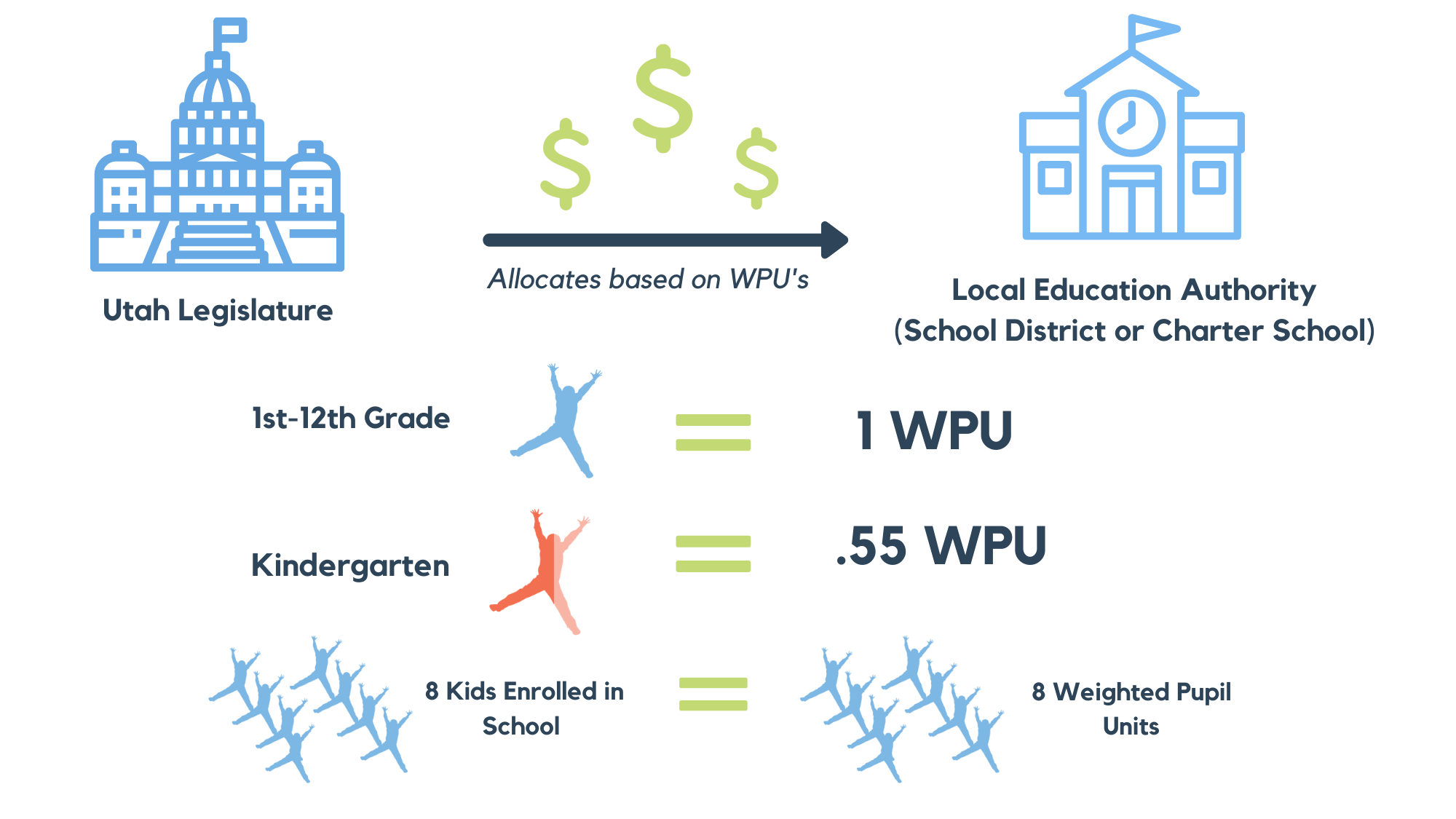
Currently, Utah ranks dead last in the nation - behind all others states and the District of Columbia - with regard to “per pupil funding.” This ranking has remained unchanged for years.
The state gives each school district only 55% of a weighted pupil unit for each enrolled kindergartner. All state-funded LEAs are required by law to provide at least one half day (two or more hours) of kindergarten education for interested families. (Okay, take me back to where I was!)
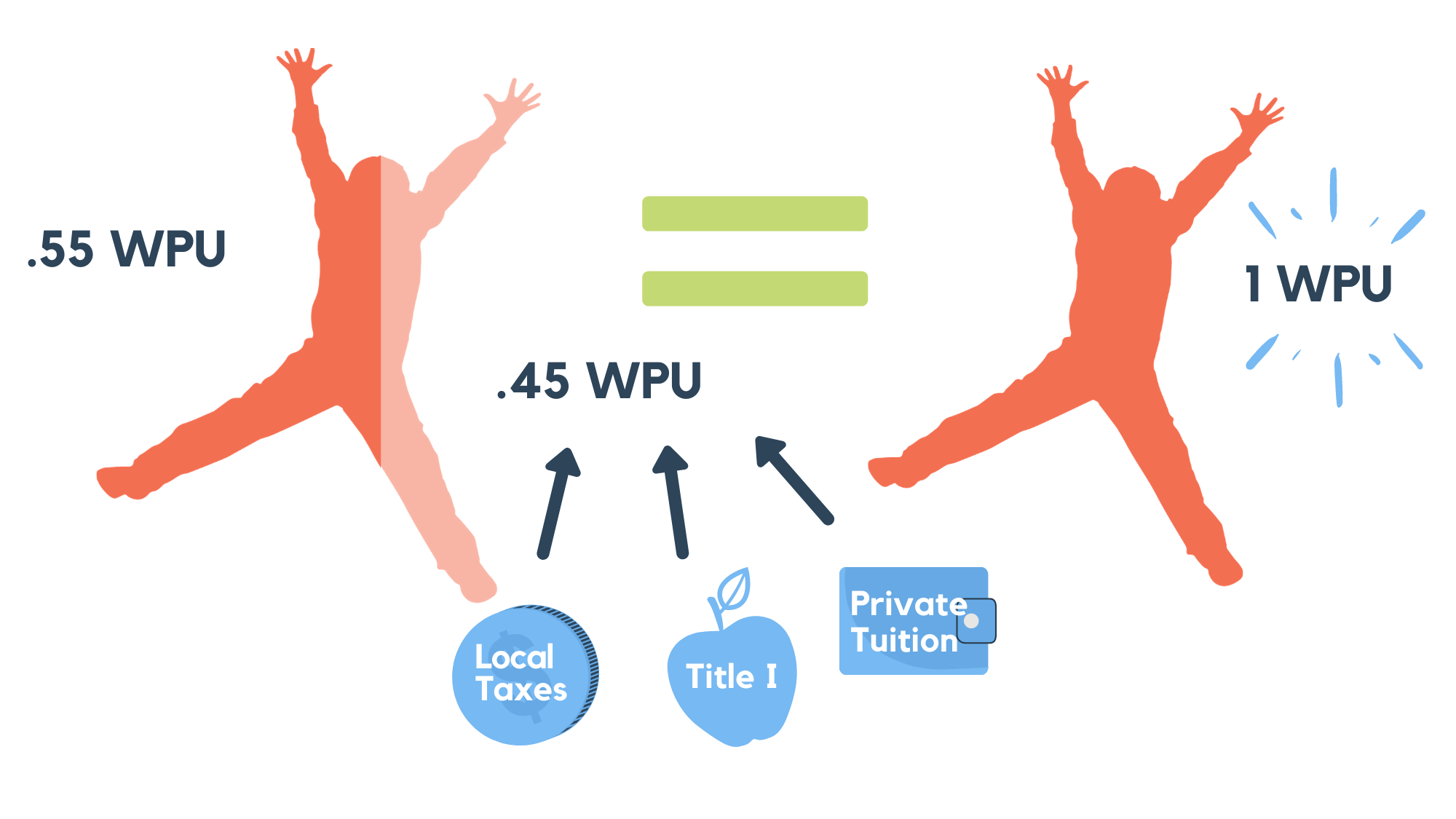
What is Utah's current level of participation in full-day kindergarten?
Across the United States, approximately 80% of kindergarteners attend a full-day kindergarten program. This figure has grown dramatically over the past twenty years (approximately 56% in 1999).
In Utah, however, as recently as 2019, only 20% of kindergarteners attended full-day kindergarten (with an additional 4% attending an “extended” day of schooling, such as an additional 45 minutes or more of academic intervention on top of the traditional half day of kindergarten education). (Thanks. Now take me back to where I was!)
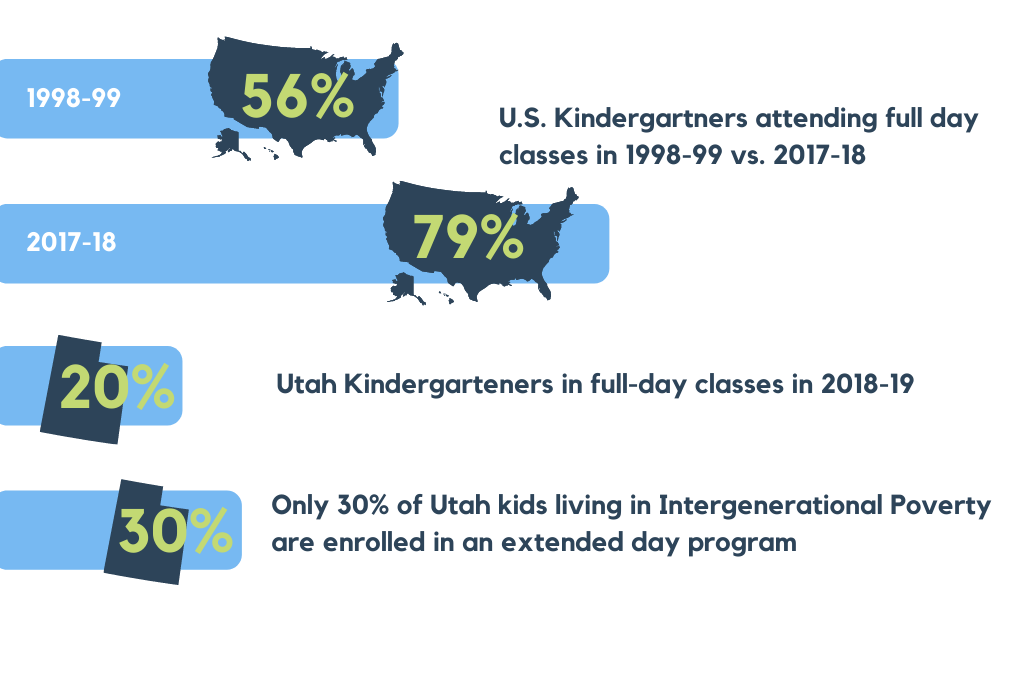
Indications that Utah is ready for more full-day kindergarten access.
In our report, “Three Things Utah Can Do to Ensure Right-Sized Access to Full-Day Kindergarten,” released in February 2020, we noted the following:
- In response to both parent interest and educator confidence in full-day learning interventions, multiple districts and individual schools have tapped federal and local funding (in lieu of sufficient state support) to open more classrooms for a full-day of kindergarten instruction;
- In every school district that has expanded access to full-day kindergarten (including Carbon SD, Rich SD, Ogden SD, Murray SD, Washington County SD, Grand SD, Granite SD, Salt Lake SD and Canyons SD), participation has been robust; and
- Families living in districts offering little or no access to full-day kindergarten in their neighborhood school, admit to registering their kindergarten-aged children in a different district, in order to enroll their child in a full-day program. (Okay, take me back to where I was!)
What is a "mixed-delivery system" for preschool?
A “mixed-delivery system” for preschool programming is one where a variety of different preschool providers are part of delivering preschool opportunities to families. A “mixed-delivery system” includes preschool classrooms in: public elementary schools; private child care centers; and community-based non-profit programs (such as the YMCA). In some mixed-delivery systems in other cities, counties and states in the U.S., government funding is used to provide access to preschool for families, who are allowed to select which type of preschool program (school-based, community-based or private provider) is the best fit for their child. (Thanks. Now take me back to where I was!)
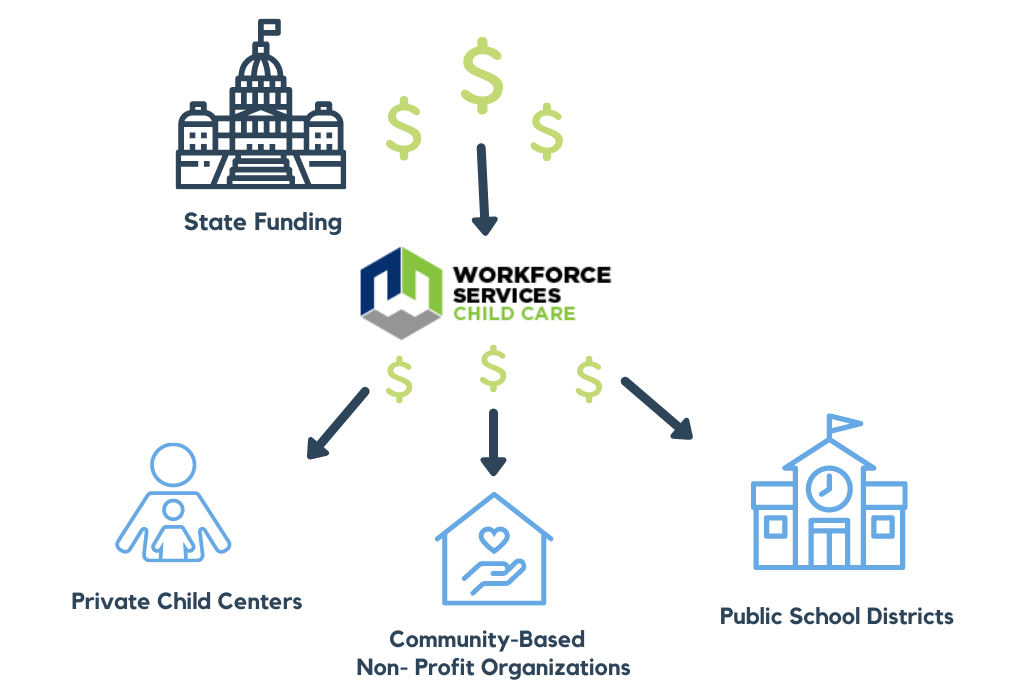
What is the state's current investment in preschool?
The only state funding explicitly available for preschool programs is the amount allocated annually, since 2014, for the High Quality School Readiness (HQSR). The program started with an allocated $7.5 million of baseline funding; there has been no increase since. This program was a state-funded continuation of a Pay-For-Success initiative pioneered by the United Way of Salt Lake in 2013. Under the HQSR program, school districts and private child care providers can apply for a performance-based grant to fund preschool “seats” in their classrooms. Since 2014, approximately 5,000 Utah preschoolers have participated in the program.
The National Institute for Early Education Research (NIEER) produces an annual report on which states in the U.S. have state-funded preschool programs. With the exception of the 2019-2020 report, each year, Utah’s state-funded preschool program has failed to meet the minimum criteria to be included in NIEER’s annual report. (Okay, take me back to where I was!)
How do childcare subsidies work, and why are these changes important?
Thanks to the federal government's Child Care and Development Fund, Utah is able to help low-income parents cover the cost of childcare while they are working, looking for work or training for work. During the current budget year (from July 1, 2020 to June 30, 2021), Utah will receive approximately $139 million in CCDF money, including an additional $40 million in one-time CARES Act funding to help with pandemic-related child care support. The federal government requires that at least 70% of this amount must be used to help families directly, through child care subsidies.
This additional funding, with more COVID relief dollars on the way, has allowed Utah to make several positive changes in its childcare subsidy program. These changes have made it possible for more families to get help paying for childcare services. The changes have also helped stabilize and support childcare providers, whose businesses have been hit really hard by the pandemic.
In normal times, a family must make less than 56% of the state median income (SMI) to qualify for a childcare subsidy. That is $44,016 for a family of four people (or 168% of the federal poverty level). Thanks to COVID relief funding, families that make up to 85% of SMI to qualify for help. That is $65,498 for a family of four people. Child care subsidies are paid directly to a childcare provider when a child enrolls. In normal times, Utah only pays for each day that the child attends childcare. This means subsidies can be an unstable and unreliable source of income for providers. Thanks to COVID relief funding, Utah now pays childcare providers based on enrollment - so providers don't suffer financially when families have to quarantine, stay home from work or become ill. We think these changes, and others made possible by increased investment in the last year, should be permanent. This will help more families in Utah access safe, affordable and quality childcare. (Thanks. Now take me back to where I was!)
What makes Utah's early childhood care and education system so "sprawling" and difficult to coordinate?
Currently, several different federal, state and local entities (including private businesses and non-profit organizations) are responsible for providing early care and education programs for Utah families with young children.
Office of Child Care (OCC)
The Office of Child Care (OCC), in the Department of Workforce Services (DWS), provides child care subsidies to help thousands of low-income Utah families afford child care. In addition to state licensing requirements, OCC has a new “Child Care Quality System” that gives participating child care providers a designated quality level, based on a number of different factors. The Office of Childcare also manages the High-Quality School Readiness (HQSR) program funded by the legislature, through which a limited number of three- and four-year olds are able to participate in structured preschool programs.
Office of Child Care Licensing (CCL)
The Office of Child Care Licensing (CCL), in the Utah Department of Health (UDOH), is in charge of making sure child care providers maintain a basic level of health and safety in their child care businesses.
Utah State Board of Education
In addition, the Utah State Board of Education has guidelines for preschool programs that are provided through the public school system. Those guidelines are separate from the guidelines schools and child care providers must follow if they are participating in the state’s High Quality School Readiness (Preschool) performance-based grant program.
Private Preschool Providers & Home-Based Preschool Programs
There are also many private preschool providers throughout the state who are not required to be licensed by the Office of Child Care Licensing and who are not governed by the Utah State Board of Education. These are the kind of home-based preschool programs that provide only a couple of hours of instruction per day, for families who are willing and able to pay privately.
Head Start and Early Head Start Programs
There are also dozens of Head Start and Early Head Start program sites throughout the state, which adhere to a completely different set of standards, set by the federal government, and which are largely independent of any state agency.
(Whew, that's enough! Take me back to finish the letter, please.)
Amendment G Passed. Now What Happens?
With Amendment G winning 54% of the vote this month, many of our partners and supporters have been asking us: What’s going to happen next?
What changes will result from this Constitutional amendment going into effect January 1, 2021, along with the legislation triggered by it (HB 357)?
The short answer is, “Probably not a lot, at least not immediately, but possibly quite a bit over the long term.”
As a result of the passage of Amendment G, the Utah Constitution Article XIII, Section 5, paragraph 5 changes from
“All revenue from taxes on intangible property or from a tax on income shall be used to support the systems of public education and higher education as defined in Article X, Section 2.”
to the following:
“All revenue from taxes on intangible property or from a tax on income shall be used:
(a) to support the systems of public education and higher education as defined in Article X, Section 2; and
(b) to support children and to support individuals with a disability.”
The state’s budget leaders sought this change because they expect the long-term trend to continue of Utah’s higher education budget shifting from the General Fund (which is financed mainly by the sales tax) to the Education Fund (which is financed mainly by the income tax). This shift has made it possible to make more of the General Fund available for social and healthcare services. But once higher ed has shifted completely out of the General Fund, something expected to happen in the coming years, then budget writers will no longer have a mechanism to free up additional funds to meet the state’s obligations for healthcare and social services. This concern is what drove the decision to place on the ballot a Constitutional amendment to allow budget writers to begin to shift additional items (services for children and for Utahns with disabilities) out of the General Fund and have them financed by the income tax.
In the FY21 budget passed by the Legislature in March and then adjusted in June (the FY21 budget year runs from July 1, 2020 through June 30, 2021), just 4% of the higher education budget came from the General Fund and the remaining 96% from the Education Fund. The chart below shows how the higher education budget has been divided between the two funds in recent fiscal years:
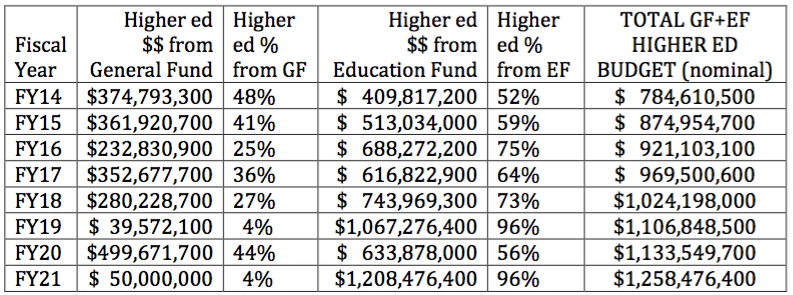
Source: Office of Legislative Fiscal Analyst annual publication “Budget of the State of Utah” at https://le.utah.gov/asp/lfa/lfareports.asp?src=LFAAR
While the trend has not been a straight line, the general direction has been to shift the higher education budget out of the General Fund and into the Education Fund. And, indeed, two of the last three budgets have seen 96% of the higher education budget come out of the Education Fund.
This trend has also been facilitated by the fact that income tax revenue has been growing faster than sales tax revenue.
Assuming these trends continue, we can expect to see the FY22 and future year budgets begin to make gradually increasing use of income tax revenue to finance social and healthcare services for children and Utahns with disabilities, two items that until now were only funded from sales tax revenue (through the General Fund).
What will be the impact of Amendment G on education funding?
As part of the political deal that produced Amendment G, the Legislature passed HB 357, with implementation contingent on voter approval of Amendment G. HB 357 contains three main provisions intended to provide education advocates with compensation for losing the Constitutional earmark of the income tax for education:
- It requires that “when preparing the Public Education Base Budget, the Office of the Legislative Fiscal Analyst shall include appropriations to the Minimum School Program from the Uniform School Fund… in an amount that is greater than or equal to:
(a) the ongoing appropriations to the Minimum School Program in the current fiscal year; and
(b) … enrollment growth and inflation estimates…”
This is intended to avoid what happened in the Great Recession a decade ago, when annual appropriations were not sufficient to keep up with inflation and enrollment growth, and it took almost a decade to restore real per-student education appropriations.
- It requires that 15% of education revenue growth go into a new “Public Education Economic Stabilization Restricted Account” to be saved for recessions until it reaches 11% of the full Uniform School Fund. This is intended to build up a new reserve fund of about $400 million to finance the first commitment mentioned above, the commitment that education funding will always increase by enough to cover enrollment growth and inflation, even in times of recession. This new annual 15% savings requirement will mean smaller education funding increases in good times and larger ones in bad times, in effect smoothing out the annual changes in education funding. It does not change the overall amount available for education budgets over the full course of each economic cycle.
- HB 357 allows local districts to reallocate capital funds to cover operating expenses in recession years. This is something that was allowed on a one-time basis in the Great Recession a decade ago. Now it will be allowed in any year when the Legislature makes use of the new Public Education Economic Stabilization Restricted Account.
What impact will Amendment G and HB 357 have on funding for social and healthcare services for children?
On the positive side, budget writers will now have increased flexibility to use income tax revenues that are now going to education for social and healthcare services for children and Utahns with disabilities. On the negative side, there are no new revenue streams and no rolling back of past tax breaks, and HB 357 does promise an increased commitment to education in recession years (presumably including the current one), so that seems to imply that there will be less available for everything other than education, at least in the short term.
What impact will this have in the coming year?
This depends on how much revenue there is. Will there be enough new education revenue to cover inflation and enrollment growth? And if not, how will the state budget cover that commitment supposedly contained in HB 357 since the new Public Education Economic Stabilization Restricted Account does not yet have any money in it? The Legislature may face the same difficult choices as in the last recession a decade ago between funding enrollment growth and inflation in the education budget or funding life-saving social and healthcare services. And if they choose to keep their promise to fund enrollment growth and inflation in the education budget in the absence of sufficient education revenues, then that commitment will come at the expense of other areas of the state budget, such as social and healthcare services for children.
One wild card here is the question of how the calculations will be impacted by the unprecedented drop in student enrollment that was reported this fall. Student enrollment had been projected to grow by 7,000; instead it fell by over 2,000. This drop is probably a temporary blip due to the impacts of the COVID-19 pandemic. But the Legislature may see it as an opportunity to go with a low-ball estimate of enrollment for FY22 when it meets to pass that year’s budget this coming winter. Doing so would certainly make it easier to keep its commitment to fund enrollment growth and inflation even in the current downturn.
What impact will this new arrangement have in the longer term?
On the negative side, the fact that Amendment G and HB 357 provide for no new revenue streams to roll back any of what now amounts to $2.4 billion every year in tax breaks enacted since 1995 (18% of public revenues) does not bode well for education, for social and healthcare services for Utahns in need, or for any of the many areas of state responsibility that suffer from chronic revenue shortages because of these revenue losses.
On the positive side, the promise made by the state’s leaders to always at least fund inflation and enrollment growth could potentially lead to an increased commitment of existing state resources to education than might have otherwise taken place. If that happens, and since the need for resources in other areas is not going to change, there is the possibility that members of the state’s budget leadership might move closer to public opinion, which has expressed consistent -- and growing -- willingness to pay more to achieve improvements in areas of state responsibility like education, transportation, and air quality, as evidenced by the results of the following public opinion surveys this year:
If that happens, then we will be able to say that Amendment G led to positive changes in state fiscal policy for the benefit of all of Utah’s children. But if not, then we may well be in for many years of budget writers using their newfound flexibility to grant substantial increases to one area of the budget one year and another the next, making different areas of the budget compete with each other to be that year’s “favored child,” but leaving none better off in the long run.
THIS PAPER IS ALSO DOWNLOADABLE AS A PDF HERE.
WE ALSO PRESENTED THIS PAPER AS A SLIDESHOW ON A FACEBOOK LIVE EVENT: https://www.facebook.com/watch/live/?v=380455343223086&ref=watch_permalink
The state's leading child research and advocacy organization Voices for Utah Children announced its opposition to Constitutional Amendment G in an online press conference today (Monday, October 5, 2020).
Constitutional Amendment G is the proposal to amend the Utah State Constitution to end the Constitutional earmark of all income tax revenues for education. Since 1946 Utah has dedicated 100% of income tax revenues to education, initially defined only as K-12 education and, since 1996, including also higher education. The State Legislature voted in March to place on the ballot the question of also allowing these funds to be used for other purposes -- specifically for programs for children and for Utahns with disabilities.
The arguments made by proponents and opponents are summarized in an online document prepared by the state election administrators in the Lt Governor's office. According to that document, "the state spends about $600 million annually of non-income tax money on programs for children and programs that benefit people with a disability."
Voices for Utah Children CEO Maurice "Moe" Hickey explained the organization's decision to oppose the Amendment: "We believe that the proposed Amendment not only won’t solve Utah’s state budget woes, it is likely to delay the real fiscal policy changes that are needed. Over the past decade we have been continuously ranked last in the country for per pupil spending. This is a caused by our growth in number of students, combined with a lowered tax burden in the past decade. A major question we have to ask is “if the current Constitutional earmark has failed to help Utah invest more in education, how will getting rid of it improve matters?” The unfortunate reality is that getting rid of the Constitutional earmark of income tax for education does nothing to solve the real problem, which is the fact that nearly every area of state responsibility where children are impacted – education, social services, public health, and many others – is dangerously underfunded."
Health Policy Analyst Ciriac Alvarez Valle said, "Utah has one of the highest rates of uninsured children in the country at 8% or 82,000 children, and we have an even higher rate of uninsured Latino children at almost 20%. It is alarming that even during this pandemic, children and families are going without health insurance. There are so many ways to reverse this negative trend that began in 2016. Some of the solutions include investing in our kid’s healthcare. By investing in outreach and enrollment efforts especially those that are culturally and linguistically appropriate for our communities of color, we can ensure they are being reached. We also have to invest in policies that keep kids covered all year round and ensures they have no gaps in coverage. and lastly, we have to invest in covering all children regardless of their immigration status. By doing these things we can ensure that kids have a foundation for their long term health and needs. It's vital that we keep children’s health at the forefront of this issue, knowing that kids can only come to school ready to learn if they are able to get the resources they need to be healthy."
Health Policy Analyst Jessie Mandle added, "All kids need to have care and coverage in order to succeed in school. We are no strangers to the funding challenges and the many competing demands of social services funding. Without greater clarity, more detail, and planning, we are left to ask, are we simply moving the funding of children’s health services into another pool, competing with education funding, instead of prioritizing and investing in both critical areas? Sufficient funding for critical children’s services including school nurse, home visiting and early intervention, and school-based preventive care remains a challenge for our state. We have made important strides in recent years for children’s health, recognizing that kids cannot be optimal learners without optimal health. Let’s keep investing, keep moving forward together so that kids can get the education, health and wraparound services they need."
Education Policy Analyst Anna Thomas: "We often hear that UT is dead last in the nation in per pupil funding. We have also heard from such leaders as Envision Utah that millions of dollars are needed to avert an urgent and growing teacher shortage. What we talk about less is the fact that these typical conservative calculations of our state’s underfunding of education don’t include the amount the state should be paying for the full-day kindergarten programming most Utah families want, nor does it include the tens of millions our state has never bothered to spend on preschool programs to ensure all Utah children can start school with the same opportunities to succeed. Utah currently masks this underfunding with dollars from various federal programs, but this federal funding is not equitably available to meet the needs of all Utah children who deserve these critical early interventions. The state also increasingly relies on local communities to make up the difference through growing local tax burdens - which creates an impossible situation for some of our rural school districts, where local property tax will never be able to properly fund early interventions like preschool and full-day kindergarten along with everything else they are responsible for. Our lack of investment in early education is something we pay for, much less efficiently and much less wisely, later down the road, when children drop out of school, experience mental and physical health issues, and get pulled into bad decisions and misconduct. If kids aren’t able to hit certain learning benchmarks in literacy and math by third grade, their struggles in school - and often by extension outside of school - multiply. We should be investing as much as possible in our children to help ensure they have real access to future success - and can contribute to our state's future success. You don’t have to be a math whiz - third grade math is probably plenty - to see that the general arithmetic of Amendment G, and the attendant promises of somehow more investment in everything that helps kids - just doesn’t add up. We have multiple unmet early education investment obligations right now. Beyond that, we have many more needs, for children and for people with disabilities, that we must be sensitive to as a state especially during a global pandemic. How we will ensure we are investing responsibly in our children and our future, by having MORE expenses come out of the same pot of money - which the legislature tells us every year is too small to help all the Utah families we advocate for - is still very unclear to me. Until that math is made transparent to the public, we have to judge Amendment G to be, at best, half-baked in its current incarnation."
Fiscal Policy Analyst Matthew Weinstein shared information from the Tax Commission (see slide #8) showing that Utah's overall level of taxation is now at its lowest level in 50 years relative to Utahns' incomes, following multiple rounds of tax cutting. He also shared recent survey data from the Utah Foundation showing that three-fourths of Utahns oppose cutting taxes further and are ready and willing to contribute more if necessary to help solve the state's current challenges in areas like education, air quality, and transportation. He also contrasted the public's understanding that there's no "free lunch" with the unrealistic election-year promises made by our political leadership -- more money for both education and social services if the public votes for Amendment G -- even though Amendment G does nothing to reverse any past tax cuts and address the state's chronic revenue shortages.
The organization shared a one-page summary of the arguments (available here in pdf format) for and against the proposed Constitutional Amendment:

Voices for Utah Children has also published a full five-page position paper that is available in pdf format.
This press conference was broadcast live at
Media coverage:

